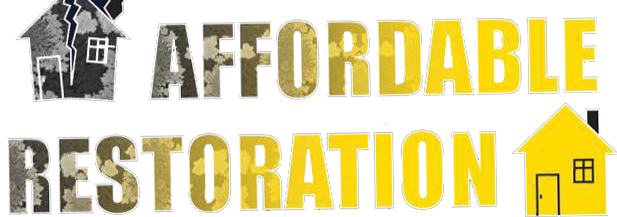Premier Mold Removal in Kootenai County
At Affordable Restoration, we provide expert mold removal and mitigation services across North Idaho, including Coeur d'Alene, Kellogg, Sandpoint, and St. Maries. Our dedicated team uses advanced environmental controls and techniques to tackle mold at its source, ensuring your home or business remains healthy and free from mold infestations.

Mold Prevention and Control in Your Home
Understanding that moisture control is critical in preventing mold growth, we offer specialized services designed to maintain optimal indoor humidity levels and prevent excess moisture. Our approach includes:
- Environmental Controls: We implement robust systems to manage humidity and prevent moisture accumulation. Keeping the Relative Humidity (%RH) below 55% is essential, as higher levels can promote mold growth. Our strategies involve using state-of-the-art dehumidifiers and other moisture control technologies to maintain a dry environment.
- Dry Track System: Ideal for upper levels above crawl spaces, this system effectively manages moisture that can seep from lower to upper floors, ensuring dry conditions where mold cannot thrive.
- Clean Space Vapor Barrier: Installed in your crawl space, this barrier significantly reduces moisture content, which helps combat home allergens and contributes to less humidity and purer air throughout your home.

Affordable Restorations Qualifications and Certifications for Mold Treatment
It is essential to choose a contractor who is fully licensed, bonded, and insured for mold removal. In Coeur d'Alene, Sandpoint, Kellogg, and St. Maries, Affordable Restoration holds all necessary certifications and insurance, ensuring that every project is handled professionally and with the utmost care. We make sure to provide transparent cost estimates upfront, maintaining affordability while adhering to the highest standards of care.
Steps For a Mold Remediation or Water Damage Project
-
Safety Check:
- Before beginning any remediation work, our team conducts a comprehensive safety check to identify any potential hazards, including electrical risks, structural instabilities, and the presence of asbestos or lead. This ensures the safety of both our crew and the building occupants.
-
Detailed Inspection:
- We thoroughly inspect using advanced diagnostic tools such as thermal imaging cameras and moisture meters. These tools help us identify the source of moisture and the extent of mold growth, which are critical in planning the remediation strategy.
-
Identifying Moisture Sources:
- The key to effective mold remediation is addressing the moisture problem that supports mold growth. We identify all potential sources of moisture, including leaks, high humidity, or condensation issues, prevalent in the climates of northern Idaho.
-
Documenting Damage:
- We document the affected areas and create a detailed report outlining the extent of mold growth and water damage. This documentation is crucial for insurance claims and for planning the remediation process.
-
Setting Up Containment:
- To prevent the spread of mold spores to other areas of your home or building, we set up containment barriers using plastic sheeting and negative air pressure systems. This isolation is crucial during the cleaning and removal stages.
-
Negative Air Setup:
- We install air scrubbers and HEPA filters to clean the air and maintain negative pressure, ensuring mold spores are captured and removed during the remediation process.
-
Physical Removal of Mold:
- Our trained technicians remove all mold-infested materials that cannot be salvaged, such as drywall, insulation, and carpeting. These materials are safely bagged and disposed of according to local regulations.
-
Cleaning and Disinfection:
- Non-porous surfaces are cleaned using antimicrobial agents and specialized cleaning techniques like HEPA vacuuming, wire brushing, and soda blasting to remove remaining mold residues.
-
Advanced Treatment:
- For deeper penetrations, we may use vaporized hydrogen peroxide (H2O2) gas, which effectively reaches tiny cracks and crevices, ensuring thorough disinfection.
-
Moisture Removal:
- After cleaning, the affected areas are dried using professional-grade dehumidifiers and air movers to eliminate any residual moisture, a critical step to prevent mold from returning.
-
Monitoring:
- We continuously monitor the drying process with hygrometers and other moisture detection equipment to ensure the area is thoroughly dry and humidity is controlled.
-
Restoring the Structure:
- Once the mold is removed and the area is dry, we begin the restoration process to repair or replace damaged or removed materials, such as drywall, flooring, and fixtures.
-
Final Cleaning:
- After restoration, a final cleanup is conducted to ensure the space is clean, safe, and ready for occupancy.
-
Inspection and Testing:
- A third-party inspector may perform air quality tests and visual inspections to verify that mold levels have returned to normal and the remediation has been successful.
-
Certification of Completion:
- Upon passing these inspections, we provide a certificate of completion and a report detailing the remediation process, ensuring that your property is safe and healthy.
Why Choose Affordable Restoration?

